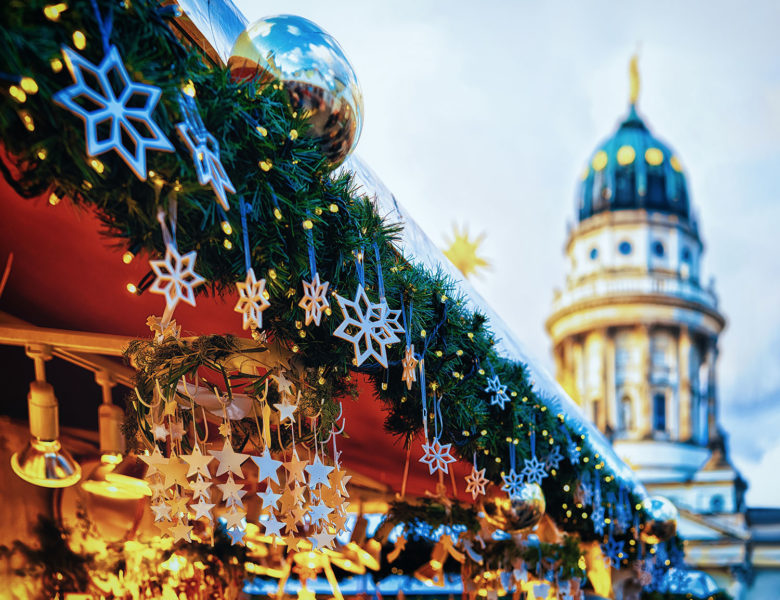

The origin of the jingle: when the music sells
We sing them without meaning to, and they are used to sell products, services or political candidates without distinction. During the Christmas holidays, jingles, and more specifically, Christmas jingles, are played all the time in shopping centres and on television. But why are they so catchy?
Experts claim that the first commercial song in history came from a cereal advertisement in 1926. It was called “Have You Tried Wheaties?”, it featured an a cappella quartet and was produced by Note Line Music Productions in the United States. But it was from the 1930s onwards that the jingle became popular and, with the spread of television, took on a new dimension.
A jingle is an advertising message that is sung. They are usually very short ditties, no longer than 60 seconds, that we can’t stop humming. Jingles accompany radio and TV commercials because they are easy to remember, usually mention the brand name or slogan, and are very repetitive. This is what is known as auditory branding.
Effectiveness made melody
In fact, according to experts, music produces recognition levels of up to 90%, while verbal elements only reach 60%. It is estimated that jingles containing words work 14% better than those that are only melodic. In addition, those that mention the brand name are 30% more effective than those that do not. If they also arouse emotion, empathy and trust, advertisers have arrived at the right place.
Jingle professionals say it is not just a song, far from it, and requires a lot of artistry. From the outset, the jingle has to be persuasive and it has to comply with the advertising strategy that has been entrusted to it. Therefore, the musical style has to be coherent with the brand identity and the product it advertises.
The more direct it is, the more it will have an impact on our message-bombarded brains. In short, it has to be clear, short and simple. There are advertising jingles, i.e. to sell a product or a service; identifying jingles, which allow a brand to be easily identified; and political jingles, which spread an idea.
Christmas, the golden season
Christmas is the time when the spirit of jingles is in full swing: the obsession with jingles contaminates the most renowned artists. And from here on, there are no limits. Songs and carols have been covered for more than 40 years, and they have always been successful. From Frank Sinatra’s “Let It Snow! Let It Snow!” or Elvis Presley’s “Blue Christmas” to Ella Fitzgerald’s “What Are You Doing New Year’s Eve” or Otis Redding’s “White Christmas”. Not counting Michael Bublé’s Christmas albums, the most talked about is Mariah Carey’s “All I Want For Christmas Is You”. Precisely this year, the song has reached 1,000 million reproductions, a madness never seen before for a jingle and which has earned it a diamond certificate.
In Spain, Christmas jingles are well represented by carols of all kinds: the mythical ones by Raphael, who in 2021, after 56 uninterrupted years, will not star in the famous TVE Christmas gala, but also the more modern ones, such as “Aquí és Nadal i estic content!” by La Pegatina, “Simplement” by Blaumut or “Si ens veiessis” by Joan Dausà and Sara Pi.
And why do we remember jingles so well, whether they are Christmas jingles or not? According to psychologists, there are at least three reasons why listening to music and remembering it is like riding a bicycle: because of simple exposure, because we link the songs to specific memories of our life and because of the so-called motor memory, that is, because our brain processes the lyrics of the songs subconsciously, as if they were just another habit, like walking, driving or swimming. How many jingles can you remember?
11Onze is becoming a phenomenon as the first Fintech community in Catalonia. Now, it releases the first version of El Canut, the super app of 11Onze, for Android and Apple. El Canut, the first universal account can be opened in Catalan territory.





El jingle que m’ha vingut al cap es el Montserrat caballé!😁
Molt curiós.
Si, si, sempre acabem sabent coses noves i que no coneixíem. Moltes gràcies pel teu comentari, Joaquim!!!
Molt bé. La saviesa i la memòria amb música entra. 🙂
Doncs sí!!! Moltes gràcies pel teu comentari, Pere.
Anys i panys sentint-los i desconeixia el nom,una descoberta la memòria musical ,un post entretingut ,gràcies
Moltes gràcies pel teu comentari, Alícia!!!
Saber quins elements treballen els publicitaris i com rebem el missatge ens posa en una línia on es difumina l’exposició del producte i l’orientació dirigida. Exemple en aquestes dates els anuncis de les loteries que fan un aiguabarreig de sentiments entre persones i possibilitat de guanyar un premi. I…resulta!
És una tècnica molt utilitzada i estesa aquesta d’utilitzar els sentiments i anhels dels altres per vendre’l’s-hi, alguna cosa. Des del meu punt de vista és poc ètic però.
Ok 👌
Gràcies, Josep!!!
Interessant. La memòria musical és esencial per recordar. Pel que es veu està molt ben estudiat! Clicar els vídeos ens fa passar una bona estona prenadalenca
Gracies Mercè! Seguim!
👌
Gràcies, Joan!!!